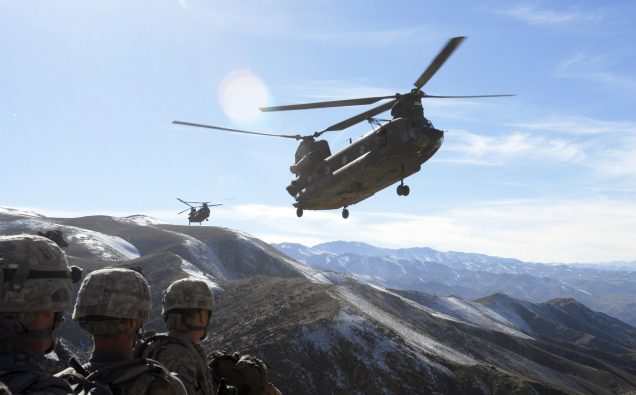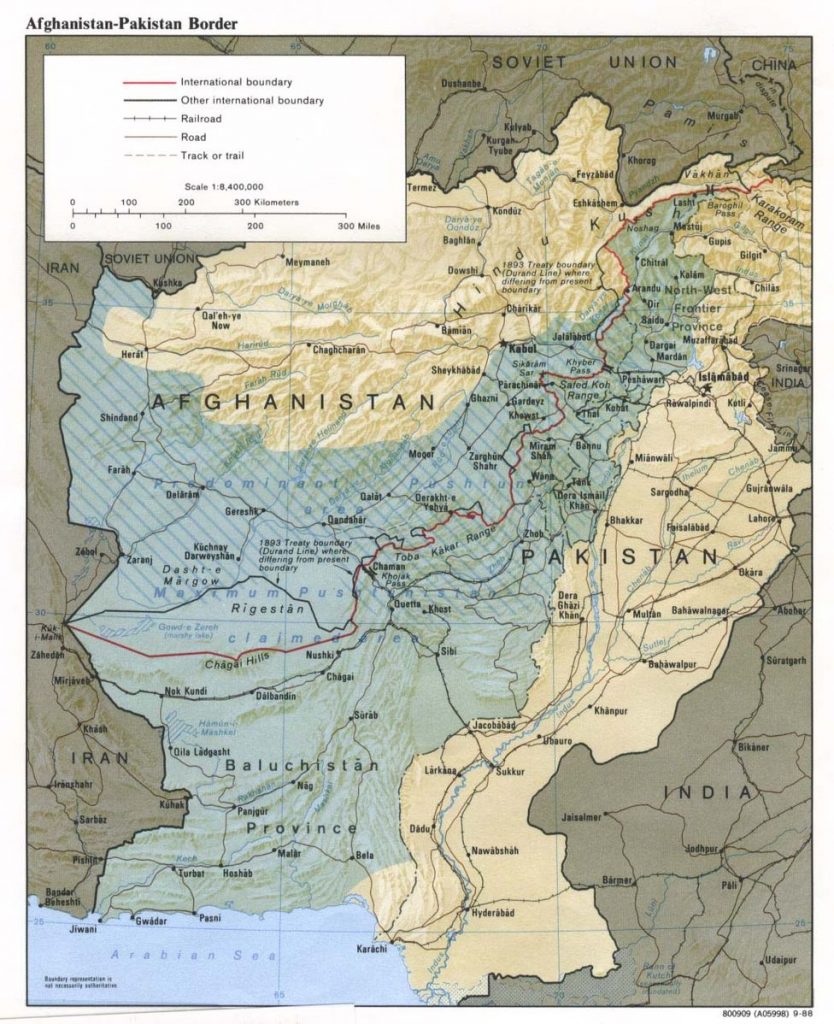
August 20, 2017
Featured image shows US troops watching two Chinook helicopters fly in to take them back to Bagram Air Field, Afghanistan Nov. 4, 2008. Credit Spc. Mary L. Gonzalez, CJTF-101 Public Affairs
Following months of deliberations with his national security team, President Donald Trump will unveil the U.S. strategy for Afghanistan conflict and South Asia in a prime time address on Monday.
Trump’s policy is likely to include a reinforcement of around 4000 troops for Afghanistan, which has been faltering against a range of threats including the Taliban insurgency and the ISIS terror.
The U.S. war in Afghanistan is already the longest in the American history and began with invasion of the landlocked country in the aftermath of 9/11 terrorist attacks by al-Qaeda from its safe havens in the country at that time.
The president’s speech on Monday is also expected to touch on the regional imperatives of the search for peace and security in Afghanistan including Pakistan’s role.
The statement released by the White House on Sunday suggests, the Indian factor – due to hostile Pakistani and Indian competition on the Afghan soil – might also be a consideration in the formulation of the new strategy.
However, there has been no official word on what kind of policy the Trump Administration plans to implement in South Asia, where some of the major countries including China and Russia also have influential relations
and have often vowed to protect their stakes in the region.
and have often vowed to protect their stakes in the region.
“President Donald J. Trump will address our Nation’s troops and the American people tomorrow night at 9:00 p.m. (EDT) from Fort Myer in Arlington, VA, to provide an update on the path forward for America’s engagement in Afghanistan and South Asia,” a statement released by the White House Press Secretary said.
This week the president consulted with top national security advisers on the way forward at Camp David on Friday.
Reports in the U.S. media have been suggesting that the Trump Administration might go ahead with the military planners’ proposal to beef up troops deployment by at least 4000 personnel.
“I am very comfortable that the strategic process was sufficiently rigorous and did not go in with a pre-set position,” Defense Secretary James Mattis said.
U.S. National Security Adviser H.R. McMaster has also expressed support for an increase in the number of American troops to bolster efforts towards Afghan security.
Trump’s predecessor Barack Obama adopted a tough line on Afghanistan war with a massive military presence but its strategy failed to achieved the desired results due to a variety of factors including the absence of unified leadership on the ground, regional interference, and Kabul’s incompetence to pursue political and national unity.
No Comment


















